Vanilla lattes, with their sumptuous blend of bold espresso and silky vanilla, have captured the hearts of coffee lovers across the UK, becoming a staple for those seeking comfort and indulgence in their daily brew.
In this guide, we’ll unveil an easy-to-follow vanilla latte recipe that allows you to bring the warmth and sweetness of your favourite café right into your kitchen.
Whether you’re a seasoned barista or a coffee novice, this recipe promises to transform simple ingredients into a delightful experience, ensuring every sip is as enchanting as it is flavorful..
The Origins of the Vanilla Latte
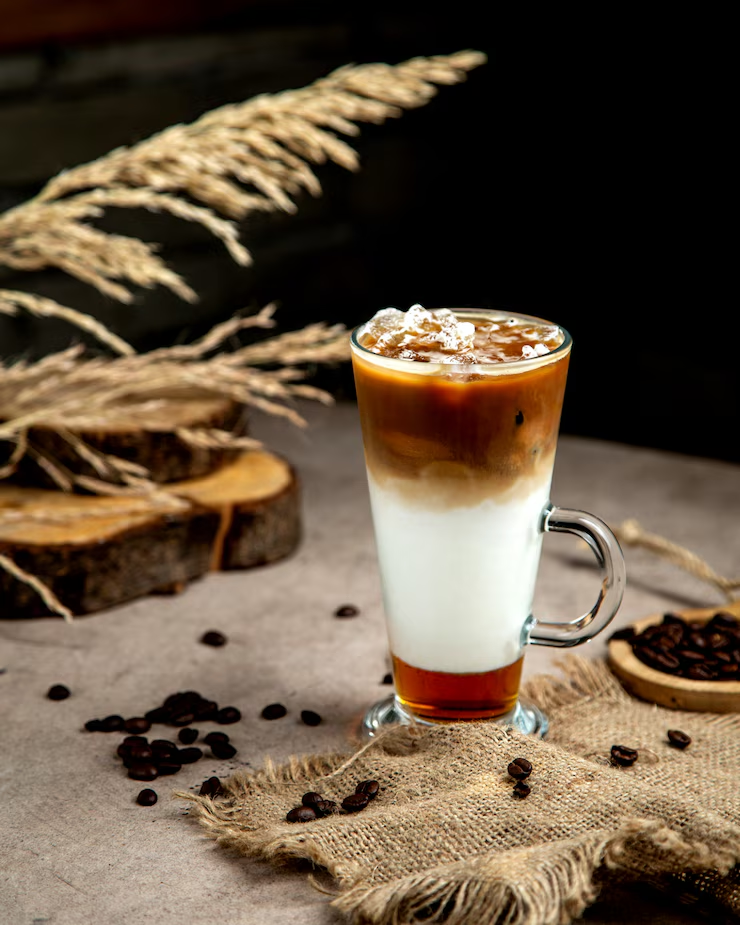
The Origin of the Latte
The latte, an iconic staple in coffee culture, has its roots deeply embedded in European traditions, particularly those from Italy, where it evolved from the classic espresso.
This delightful concoction made its way into the hearts of coffee aficionados by combining steamed milk with the robust intensity of espresso.
As lattes gained popularity across the continents, they became a canvas for culinary creativity, especially with the introduction of flavoured syrups in the late 20th century.
Vanilla’s Rise to Prominence
Among the plethora of flavours, vanilla stood out for its ability to enhance the coffee experience without overpowering the essential coffee notes. Its subtle sweetness and aromatic profile harmonise with the rich and creamy texture of milk, making vanilla lattes a favourite among those who prefer a hint of flavour.
The popularity of vanilla in lattes reflects a broader trend towards comfort and familiarity, embodying a taste that is both exotic and homely. This universal appeal has secured vanilla’s status as a perennial favourite in the realm of flavoured lattes.
Essential Ingredients for a Vanilla Latte
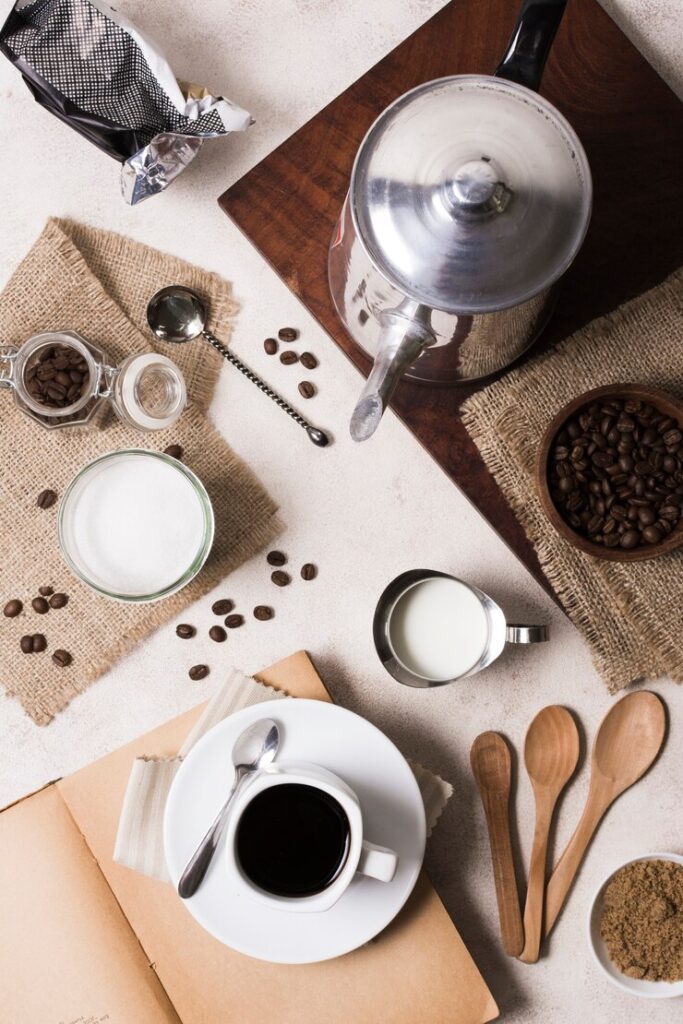
Core Components
To craft the perfect vanilla latte, the selection of core ingredients is paramount. At the heart of this beloved beverage lies espresso, the robust foundation that defines its character.
For those without an espresso machine, strong brewed coffee can serve as an admirable substitute, though it may lack some of the intensity typically associated with espresso.
The second crucial ingredient is milk, which adds a creamy, soothing texture to the drink. While whole milk is traditional, the growing preference for dietary inclusivity has popularised non-dairy alternatives such as almond, oat, and soy milk, each adding its own unique flavour and consistency to the latte.
Sweetening with Vanilla
The distinctive feature of a vanilla latte is, unsurprisingly, the vanilla flavour, most commonly introduced through vanilla syrup. This syrup can be either homemade, offering a chance to control sweetness and flavour intensity, or commercially purchased for convenience.
The choice of vanilla syrup plays a significant role in the latte’s final taste, with options ranging from rich, natural vanilla extracts to more affordable artificial vanilla flavours.
Step-by-Step Guide to Making a Vanilla Latte
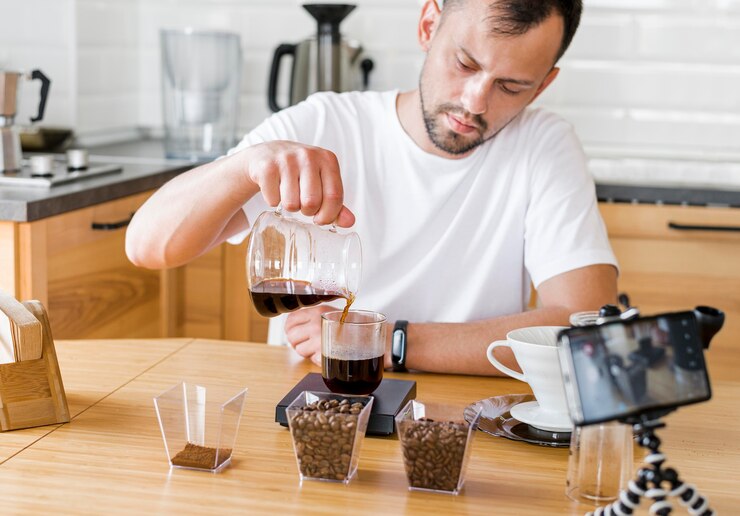
Frothing the Milk
Once your espresso is ready, the next step is to froth the milk to achieve a smooth, creamy texture that complements the intense coffee flavour. If using a steam wand, first purge it briefly before submerging it just below the milk’s surface. Keep the wand near the side of the jug to create a swirling motion, which helps incorporate air and create a velvety microfoam.
For those without a steam wand, a milk frother or even a whisk can be used to froth the milk until it’s light and airy. Remember to heat the milk to about 65°C to ensure it’s hot without being scalded.
Assembling the Vanilla Latte
With your espresso brewed and milk frothed, it’s time to assemble your vanilla latte. Start by pouring the desired amount of vanilla syrup into a warm mug – adjust the quantity according to how sweet you like your latte.
Follow this by adding the espresso shot. Finally, pour the frothed milk into the mug, holding back the foam with a spoon initially to allow the milk to mix with the espresso and syrup. Then, top off with a generous scoop of foam. Gently stir the latte to ensure the flavours are well combined.
Perfecting Your Technique
Creating the perfect vanilla latte is an art that improves with practice. Experiment with the ratios of espresso, vanilla syrup, and milk to discover your preferred balance. Each element can be adjusted to suit individual taste, making each vanilla latte a personalised coffee experience.
DIY Vanilla Syrup Recipe
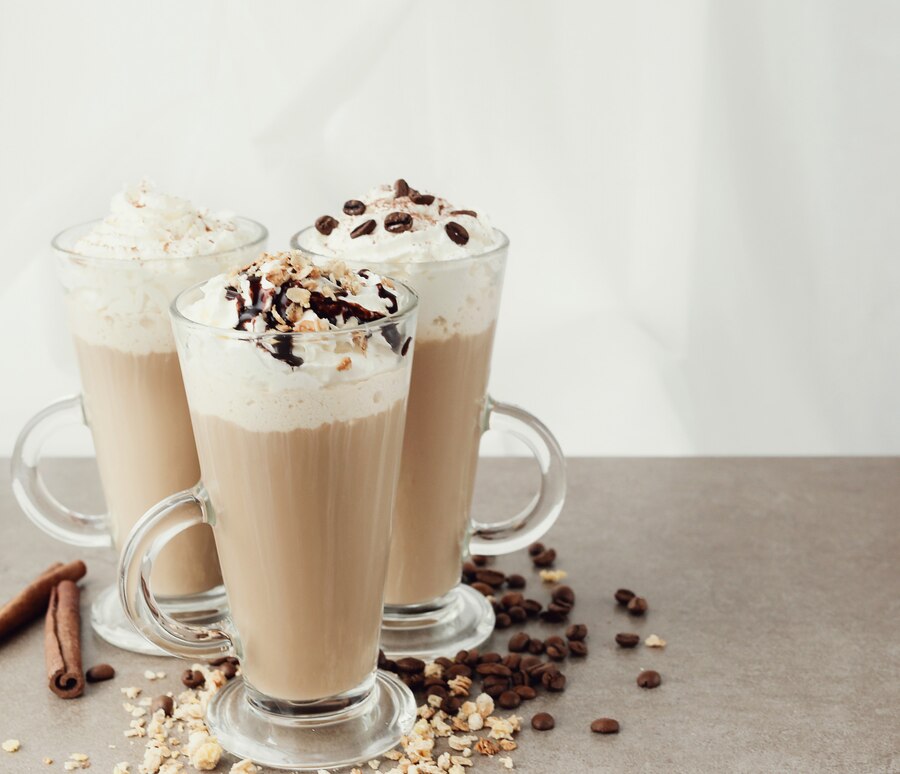
Ingredients and Preparation
Creating your own vanilla syrup is a delightful way to enhance your coffee beverages with a personal touch. To start, you’ll need just a few basic ingredients: 200 grams of granulated sugar, 250 ml of water, and 2 teaspoons of pure vanilla extract or a vanilla pod for a more authentic flavour.
If using a vanilla pod, split it lengthwise to expose the seeds, which will infuse the syrup with rich vanilla specks.
Cooking the Syrup
Begin by combining the sugar and water in a small saucepan over medium heat. Stir the mixture gently until the sugar has fully dissolved. If you’re using a vanilla pod, add it to the pan now. Bring the mixture to a gentle boil, then reduce the heat and let it simmer for about 10 minutes.
The syrup should thicken slightly, indicating that it’s ready. If you’re using vanilla extract instead of a pod, add it after removing the pan from the heat so the flavour remains potent and fresh.
Customising Your Syrup
The beauty of homemade vanilla syrup lies in the ability to tailor it to your taste. For a sweeter syrup, consider adding more sugar during the cooking process. Conversely, if you prefer a more subtle vanilla essence, reduce the amount of vanilla extract or infuse the syrup with the pod for a shorter period.
Once your syrup is ready, allow it to cool, then strain it into a clean bottle or jar. Store it in the refrigerator for up to two weeks.
Tips for Perfecting Your Latte

Selecting the Right Equipment
For coffee enthusiasts aiming to elevate their home café experience, investing in a quality espresso machine and milk frother is crucial. An espresso machine with a reliable pressure pump and precise temperature control can make all the difference in extracting the full flavour of the coffee.
A milk frother, whether standalone or part of your espresso machine, is essential for achieving that smooth, creamy froth that defines a great latte. Additionally, consider a coffee grinder to ensure your beans are freshly ground for each brew—this step alone can significantly enhance the flavour of your coffee.
Milk Variations and Frothing Techniques
The choice of milk can transform the taste and texture of your latte. Whole milk froths beautifully due to its fat content, but for those looking for lighter options, skimmed milk or milk alternatives like almond, soy, or oat milk can also produce excellent results.
When frothing milk, aim to create fine microfoam rather than large bubbles, as this will blend more seamlessly with the espresso. Heating the milk to around 65°C will optimise both taste and texture without scalding it.
Serving and Presentation Ideas for Vanilla Latte
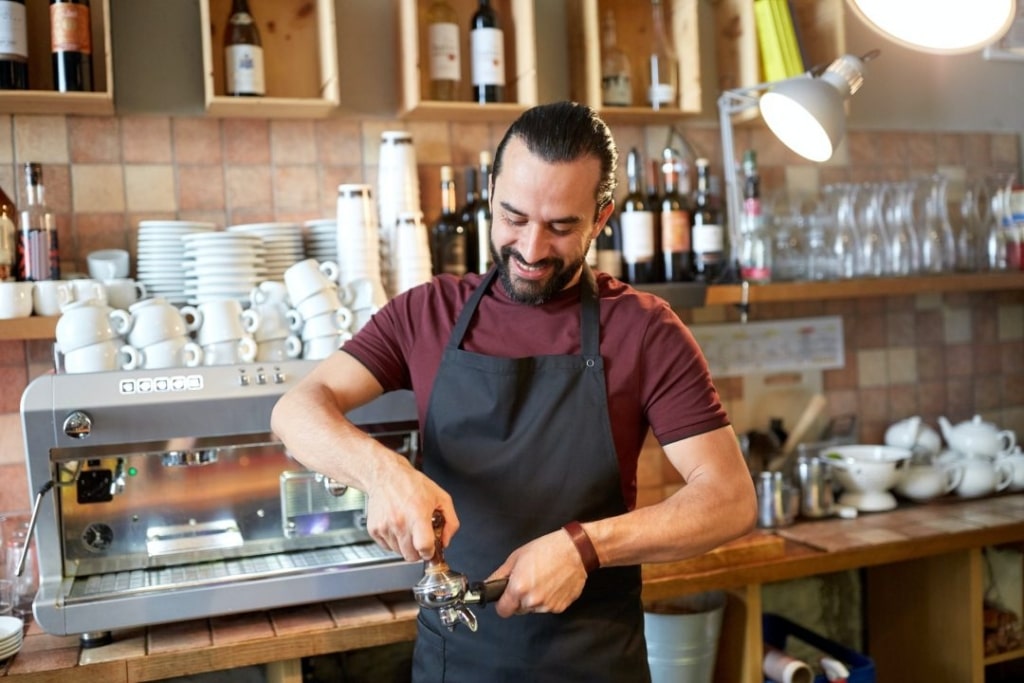
Choosing the Right Glassware
The choice of glassware can significantly enhance the visual appeal of your vanilla latte. Opting for a clear, tall glass allows the layers of espresso and milk to be beautifully displayed, making the drink not only tempting but also a feast for the eyes.
For a more traditional approach, a classic ceramic mug adds warmth and comfort, ideal for cosy mornings. Consider the setting and mood you want to create when selecting your glassware, as it sets the tone for the drinking experience.
Garnishing Techniques
Garnishing your vanilla latte can transform it from a regular beverage into a gourmet delight. A light dusting of cocoa powder or cinnamon adds a touch of elegance and a hint of additional flavour.
Healthier Alternatives and Modifications for Vanilla Lattes

Reducing Sugar in Your Latte
For those looking to enjoy a vanilla latte with less sugar, consider modifying the vanilla syrup component. You can create a low-sugar version of the syrup by reducing the sugar content and adding natural sweeteners like stevia or erythritol, which provide sweetness without the added calories.
Additionally, choosing a lighter roast coffee can naturally enhance the sweetness of your latte, allowing you to cut back on added sugars without compromising on taste.
Healthier Milk Alternatives
Choosing the right milk alternative can significantly reduce the calorie and fat content of your vanilla latte while catering to dietary restrictions such as lactose intolerance or vegan preferences.
Almond milk, oat milk, and coconut milk are popular non-dairy alternatives that provide a creamy texture and a hint of their inherent flavour, enhancing the overall profile of your latte. These options are generally lower in calories and contain beneficial nutrients, making them a healthier choice for daily consumption.
An Invitation to Experiment and Share
our journey through the delightful world of crafting the perfect vanilla latte at home, remember that the essence of great coffee lies in personalisation. Each ingredient in our guide offers a pathway to tailor your beverage to your unique taste and dietary preferences.
We now invite you to bring your vanilla latte adventures at Pearl Lemon Cafe. Share your unique recipes, experiences, and personal tweaks in the comments below. Whether it’s a new garnishing tip or a homemade syrup twist, your contributions help enrich our collective coffee culture.
Let’s continue to inspire and uplift each other with every cup of beautifully crafted latte!





